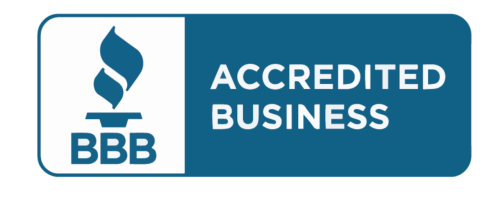Did you know New York is 11th in the nation for solar energy? It has enough solar power to light up over 522,135 homes. This shows how important solar energy is getting in Long Island and the state. Knowing how solar panels work is key for homeowners and businesses.
Solar panels use sunlight to make electricity through the photovoltaic effect. They have silicon cells that turn sunlight into power for homes and businesses. Even on cloudy days, they can still make electricity, but they work best in direct sunlight.
Solar panels have gotten much better over time. Now, they can give up to 400 Watts of power per panel, with some being over 20% efficient. This means you need fewer panels to power a house, making solar power a great choice for Long Island folks.
The solar industry is growing, making solar energy in Long Island more affordable and effective. It can cut electricity bills by 40-50%. This is why more people are choosing solar power to save money and help the planet.
Key Takeaways
- Solar panels convert sunlight into electricity using the photovoltaic effect
- New York ranks 11th nationally in solar energy capacity
- Modern solar panels can achieve efficiency ratings over 20%
- Solar energy can reduce electricity bills by 40-50%
- Solar panels can generate electricity even on cloudy days
- Long Island is experiencing a rising trend in solar power adoption
The Science Behind Solar Energy
Solar power systems on Long Island use the sun’s energy to make electricity. This happens thanks to the photovoltaic effect, a cool scientific idea. Let’s dive into the science of solar energy and how it helps power homes and businesses on Long Island.
Understanding the Photovoltaic Effect
When sunlight hits a solar cell, it makes electrons move and creates electricity. This effect was first found by Edmond Becquerel in 1839. Silicon, a common element, is used in solar cells because it can conduct electricity well.
Types of Solar Cells
There are two main types of solar cells used on Long Island:
- Crystalline Silicon: This is the most common, efficient, and affordable type.
- Thin-Film: It’s flexible and light.
Components of a Solar Panel System
A solar power system on Long Island has several important parts:
- Solar cells
- Tempered glass
- Encapsulant
- Frame
- Junction box
The Long Island Solar Farm (LISF) shows how solar energy can help the area. It has 164,312 solar panels and makes about 50 gigawatt-hours of clean energy every year. This cuts down carbon dioxide emissions by over 30,000 metric tons a year, enough for 4,500 homes.
As solar tech gets better, more people on Long Island are choosing solar power. New York State aims for 70% renewable electricity by 2030. This move will lead to a cleaner, greener future.
Solar Panel Installation Process
The journey to using solar power on Long Island starts with a detailed installation process. Essential Power, a top choice for Long Island homeowners, has perfected this process over 20 years. They have helped more than 8,500 homeowners go solar.
Site Assessment and System Design
First, Long Island solar experts do a detailed site check. They look at the roof’s condition, how much sunlight it gets, and if there are any shadows. With the latest tools, they design a system that fits your home perfectly.
Permits and Approvals
Getting through local rules is important. Essential Power knows how to handle all permits. This top rating means they make getting your solar project approved easy.
Installation and Grid Connection
Putting in solar panels usually takes just a few days. Essential Power’s skilled team installs panels, inverters, and more with care. After that, they work with local utilities to connect you to the grid. This lets you start making clean energy and cutting your electric bills.
“Essential Power’s installation crew was professional, clean, and efficient. They explained every step of the process thoroughly.” – A satisfied Long Island homeowner
Essential Power has over 500 5-star reviews, showing their skill in solar installation across Long Island. Their team’s professionalism and focus on details make switching to solar power smooth. This helps Long Island residents save over $0 a year on energy costs.
Maximizing Solar Panel Efficiency
Getting the most from your solar panels is key for both home and business setups on Long Island. The right placement, upkeep, and checks can greatly improve your system’s performance.
Optimal Placement and Orientation
For best results, put solar panels in places that get lots of sunlight. They should face south. East or west setups are okay but might give 15-20% less power. A Long Island solar company can find the perfect spot for your home.
Dealing with Shading and Weather Conditions
Shade can cut down on how much power panels make. But, solar optimizers can lessen this effect. Weather changes how much power you get, but panels work on cloudy days too. Cool weather actually makes panels work better. A Long Island solar company can set up systems that do well in different weather.
Maintenance and Monitoring
Keeping panels clean and in good shape is important for top performance. Watching how much energy you use helps spot when you need to clean or fix things. Essential Power on Long Island often offer these services.
- Clean panels often to get rid of dirt and leaves
- Look for any damage or wear and tear
- Use monitoring systems to see how well your panels are doing
- Get a pro to check your system every year
By paying attention to these areas, folks in Long Island can get the most from their solar panels. Whether it’s for a home or business, working with a trusted solar company makes sure your system works its best.
Benefits of Choosing a Solar Company Long Island
Choosing solar providers Long Island brings many benefits for homeowners. New York is eighth in the country for solar energy use. Long Island gets about 220 sunny days a year, perfect for solar energy.
There are big financial perks. Homeowners can get a 30% Federal Tax Credit and a state tax credit of up to $5,000. Solar panels in New York cost about $3.65 per watt, with a typical system costing $18,250. But, you’ll see your investment pay off quickly.
Solar homes on Long Island sell 20% faster and for up to 4% more than others. This means more value for your home and lower energy bills. The average electricity rate in New York was 23 cents per kWh in September 2023. Solar panels can cut your bills down a lot.
| Benefit | Details |
|---|---|
| Federal Tax Credit | 30% |
| State Tax Credit | Up to $5,000 |
| Home Sale Speed | 20% faster |
| Home Value Increase | Up to 4% |
Solar energy solutions Long Island are reliable and last a long time. The National Renewable Energy Laboratory says only one in 2,000 solar panels fail each year. Most panels come with 25 to 30-year warranties for steady performance. Plus, solar panels work well even on cloudy days, giving you energy all year.
Conclusion
Solar energy is changing the game for Long Island businesses. It brings big cost cuts and helps the environment. Companies here see energy costs drop by 40-70%.
This makes solar power very popular. The panels last more than 25 years and pay for themselves in 5-10 years. It’s a smart investment for the long run.
Now, almost 40,000 homes and small offices in Long Island have solar panels. This growth is boosted by federal tax credits and local rebates. These incentives make solar energy more affordable.
By going solar, businesses save money and reduce their carbon footprint. This move is key to fighting climate change and building a sustainable future. Solar power lets businesses make extra energy and sell it back, making it a wise choice.

